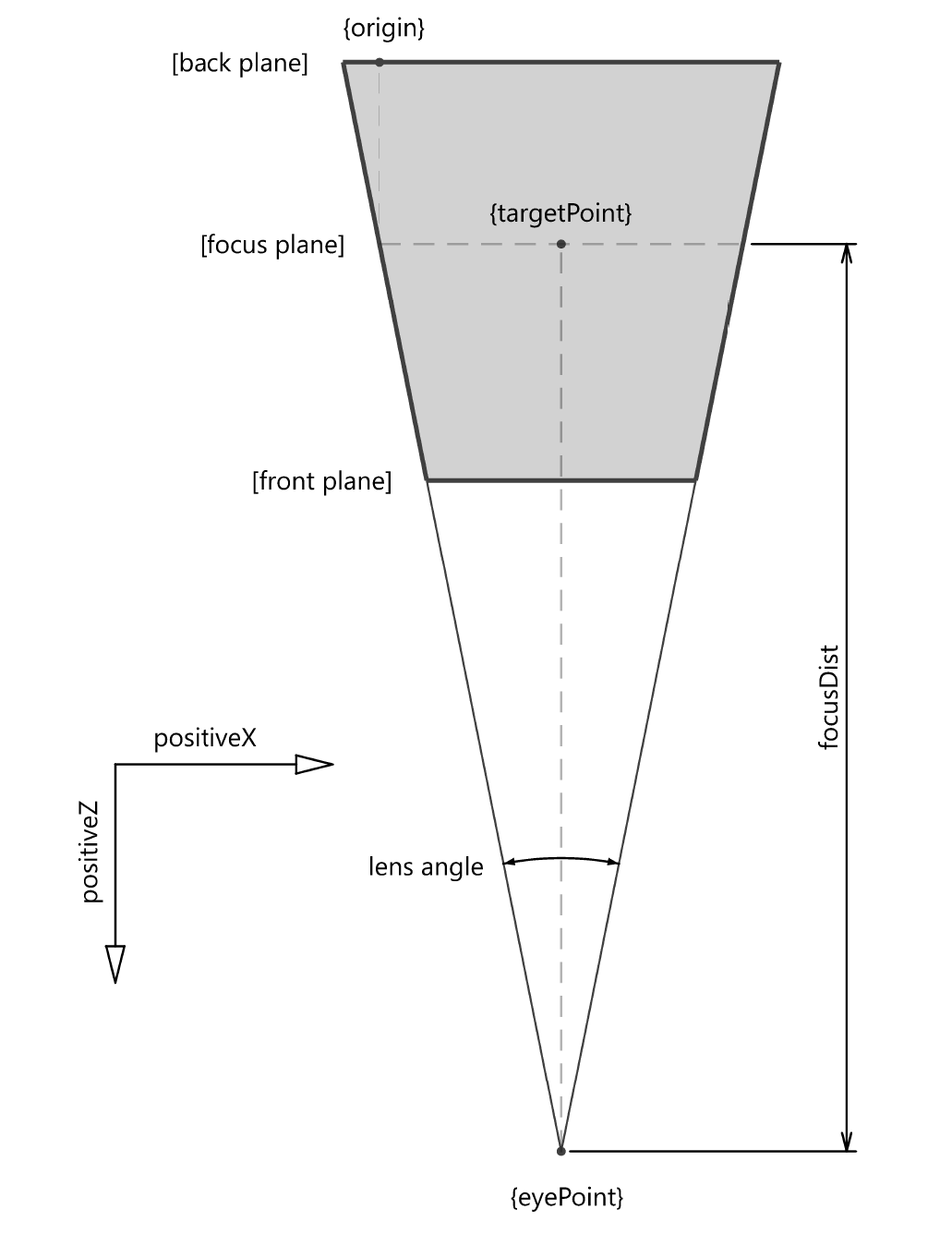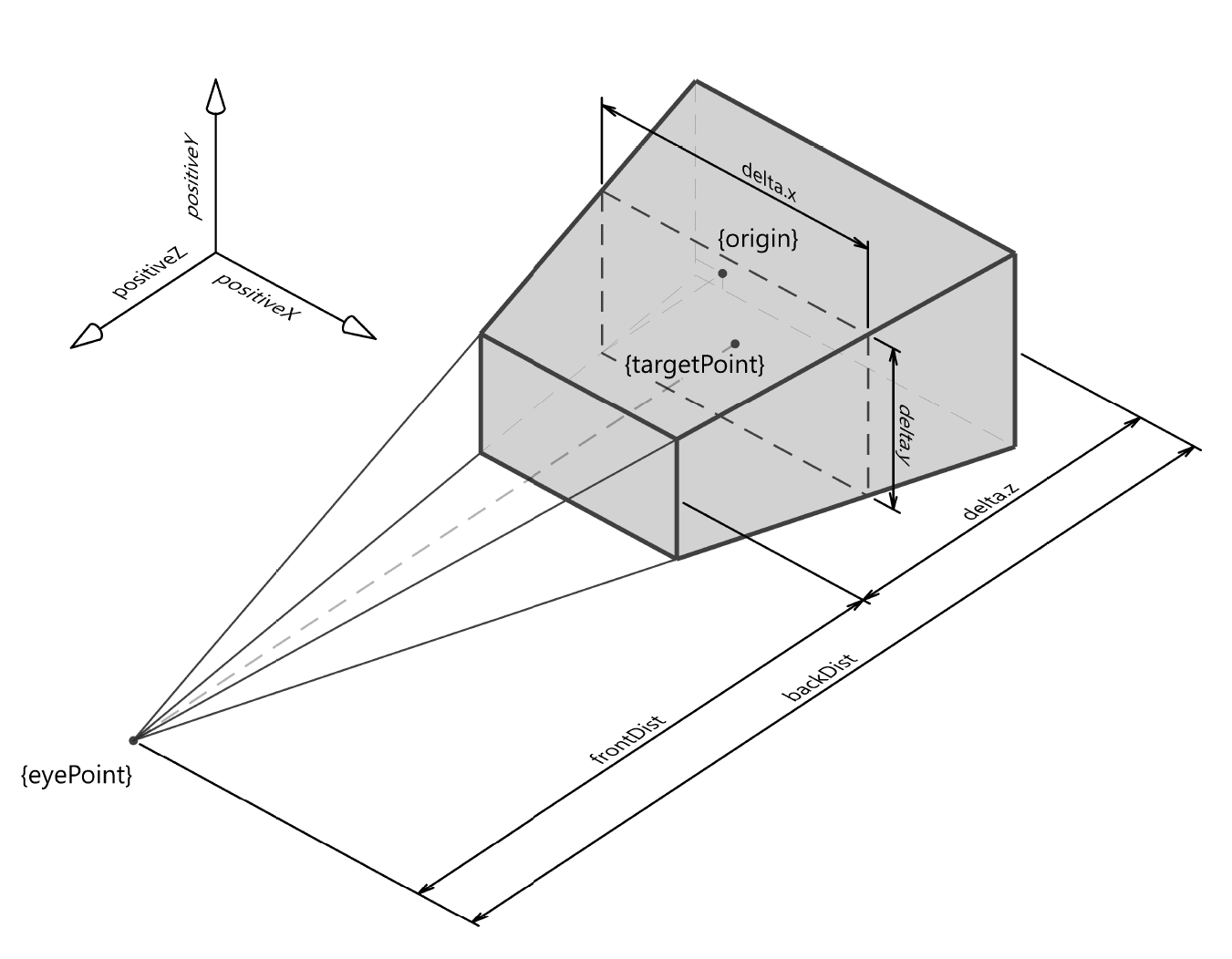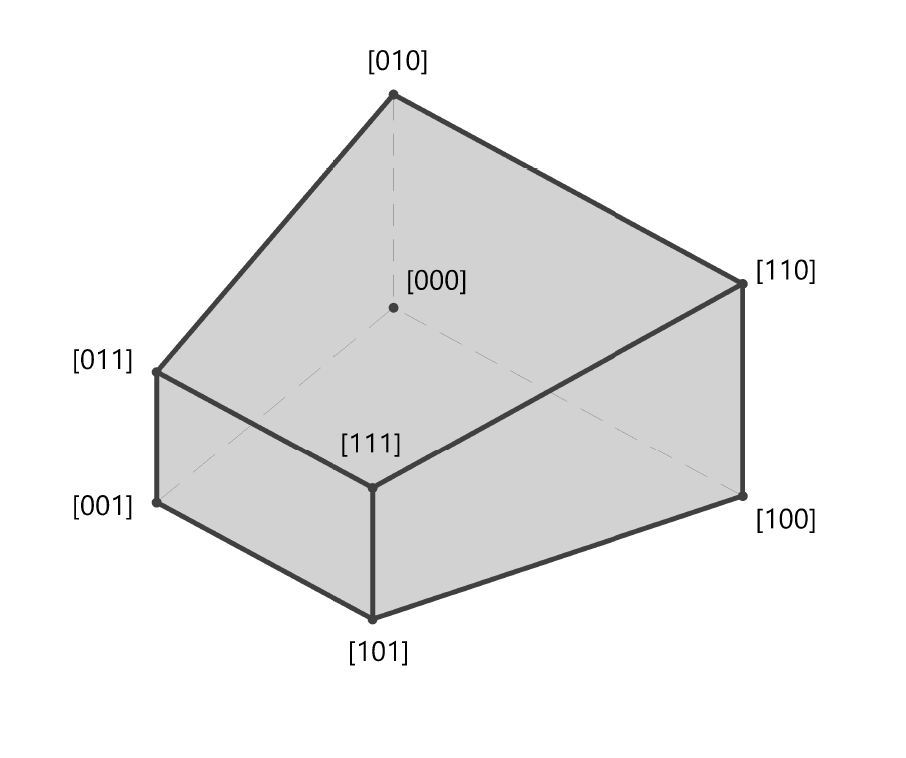Using Views in iModel.js
A View renders geometry from one or more Models of an iModel in a web browser. iModel.js applications can embed and interact with Views anywhere on a web page via an HTMLDivElement.
Views are managed by the ViewManager class, using IModelApp.viewManager.
Multiple Views may be simultaneously visible on the same web page, each with their own HTMLDivElement, and are coordinated by the ViewManager.
ViewDefinition Elements
A View is saved in an iModel as an element of the ViewDefinition class. ViewDefinitions hold all the information necessary to show the same content across sessions. This includes the camera position, the model(s) displayed, the CategorySelector, the DisplayStyle to use, plus any additional view-specific settings.
The ViewState Class
The ViewDefinition classes (in fact all Element classes) exist only on the backend, because their purpose is to read and write those elements to/from the iModel.
On the frontend, access to the elements needed to display views is provided by the ElementState classes. The ElementState classes only hold the state of elements, not
the methods to read and write elements from the database.
Views are opened by loading a ViewDefinition into a ViewState object. They begin showing the content as it was saved in the iModel, but users may modify what they're seeing using Viewing tools. These changes are only temporary (in-memory) unless they are saved back to the iModel via IModelDb.Elements.updateElement.
An instance of a ViewState in memory holds references to several other objects, including a CategorySelectorState, a DisplayStyle3dState,
and a ModelSelectorState (for SpatialViews). Since each of these objects must be loaded in the frontend asynchronously, there is an
async method called IModelConnection.Views.load that returns a promise when the ViewState and all other State objects required to display a
View are ready. The Viewport class expects loaded ViewState objects.
Types of ViewDefinitions
There are subclasses of ViewDefinition to show different types of Models in various ways.
Here are several significant subclasses:
ViewDefinitionSpatialViewDefinition- shows a view of one or more 3d SpatialModelsDrawingViewDefinition- shows a view of a single 2d DrawingModelSheetViewDefinition- shows a view of a single 2d SheetModel
For each subclass of xxxViewDefinition, there is a corresponding xxxViewState class in the frontend.
Using Viewports
ViewState objects hold the state of a ViewDefinition (what is shown in a View) in the frontend.
Viewport is an abstract class that connects a ViewState to a RenderTarget.
To connect a ViewState to a rectangular region on a web page, create instances of the ScreenViewport class. The method ScreenViewport.create takes an HTMLDivElement and a
(fully loaded) ViewState. In this manner, ScreenViewport forms the connection between a rectangular region on your web page (a "div") and a set of
Models in an iModel, a display Frustum, a DisplayStyle, and the rendering system.
Note: before creating a ScreenViewport, be sure to call IModelApp.startup.
Loading Views from an iModel
There is a method called IModelConnection.Views.getViewList that returns an array of IModelConnection.ViewSpecs in a convenient format for User Interfaces. This can be used to present a list of possible views by name in a List.
For example, to get a list of all spatial views:
/** Get a list of Spatial views from an iModel. */
public static async getSpatialViews(): Promise<IModelConnection.ViewSpec[]> {
return this._iModel.views.getViewList({ from: SpatialViewState.classFullName });
}To get a list of all drawing views:
/** Get a list of all Drawing views from an iModel. */
public static async getDrawingViews(): Promise<IModelConnection.ViewSpec[]> {
return this._iModel.views.getViewList({ from: DrawingViewState.classFullName });
}Once a view is selected from the list, it may be loaded with:
/** Stub for a real UI that would present the user with the list and choose one entry */
public static async pickView(views: IModelConnection.ViewSpec[]): Promise<string> {
// ...real ui code here showing view[].name list, returning chosenView...
const chosenView = 0;
// return the id of the chosen view
return views[chosenView].id;
}
/** Load the list of spatial views from our iModel, let the user pick one, and return a Promise for the ViewState of the selected view. */
public static async loadOneView(): Promise<ViewState> {
// first get the list of spatial views
const views: IModelConnection.ViewSpec[] = await this.getSpatialViews();
// ask the user to pick one from the list, returning its Id
const viewId: string = await this.pickView(views);
// return a promise for the ViewState of the selected view. Note that caller will have to await this method
return this._iModel.views.load(viewId);
}Then, you may wish to change one of the existing views to show the contents of the now-loaded view. For example, to switch the ViewManager.selectedView to show it, use code like:
/** Show a list of spatial views, allow the user to select one, load its ViewState, and then change the selected ScreenViewport to show it. */
public static async showOneView(): Promise<void> {
const viewstate = await this.loadOneView();
const vp = IModelApp.viewManager.selectedView;
if (undefined !== vp)
vp.changeView(viewstate);
}Note that in the examples above,
getSpatialViews,loadOneView, andshowOneViewareasync, and you mustawaitthem.
Changing the Model displayed by a 2d view
Viewports always display one ViewState. If that ViewState happens to be a ViewState2d, we sometimes call that a "2d view". Since ViewState2d shows one and only one 2d Model, it is sometimes is desireable to "switch the Model" of an existing 2d view, versus loading a new ViewState2d. This will sometimes be appropriate if you know that a set of 2d Models use a common coordinate system and categories, etc.
The Viewport.changeViewedModel2d method can be used to accomplish this:
/** Change the displayed 2d Model of the selected view, if it is currently showing a 2d Model
* @note the categories and displayStyle are unchanged. View is fitted to new model extents.
*/
public static async change2dModel(newModelId: Id64String): Promise<void> {
const vp = IModelApp.viewManager.selectedView;
if (undefined !== vp)
return vp.changeViewedModel2d(newModelId, { doFit: true });
}ViewManager
The Viewport class is responsible for displaying a View, as defined by its ViewState. However, typically the objective of showing a View is to allow users to modify the View itself, or to interact with its contents.
To facilitate that, you need to connect the event system of the browser with Viewports via IModelApp.viewManager.
/** Open a Viewport on the supplied div element. */
public static async openView(viewDiv: HTMLDivElement) {
const viewState = await this.loadOneView();
const viewPort = ScreenViewport.create(viewDiv, viewState);
IModelApp.viewManager.addViewport(viewPort);
}After the viewport is added to the ViewManager, all HTML events for its canvas are directed to the active Tool class by the ToolAdmin.
The "Selected" View
It is sometimes necessary to chose a Viewport from inside code that reacts to user input. Absent some other way of determining which Viewport to use, iModel.js applications often default to ViewManager.selectedView. This will be the last ScreenViewport in which the user clicked. ViewManager.selectedView is often the target Viewport for Tools.
Note: If there is only one Viewport visible, that Viewport will always be the ViewManager.selectedView. If there are no Viewports visible, ViewManager.selectedView can be undefined.
Viewing Tools
The iModel.js library supplies controls that allow users to modify what is shown in Views via the ViewTool classes. You can create instances of the supplied classes (e.g. WindowAreaTool, FitViewTool, WalkViewTool, RotateViewTool, etc.) or create your own subclasses for special viewing operations.
View Decorators
The Viewport class is responsible for displaying the persistent data (e.g. Models, reality data, maps, etc.) in your view. Often, however, Tools wish to show additional, non-persistent, information to convey context or call attention to items or areas of interest. That is accomplished via View Decorators
DisplayStyles
DisplayStyles describe the styling that should be applied to the contents of a View.
This includes the :
- ViewFlags
- SubCategoryAppearance visibility and overrides
- Background color
- RenderMode
- Environment
- Other view-specific parameters
They are loaded in memory in the frontend with the DisplayStyleState class.
DisplayStyles can be named and shared among many ViewDefinitions.
ModelSelectors
ModelSelectors apply only to SpatialViews. They determine the set of SpatialModels that are displayed. The Geometry for elements in SpatialModels are always stored in the iModel's Spatial Coordinate System. They are loaded in memory in the frontend with the ModelSelectorState class.
Since each 2d Model has its own coordinate system, 2d Views always only show a single Model and therefore don't use ModelSelectors.
ModelSelectors can be named and shared among many ViewDefinitions.
CategorySelectors
A CategorySelectorState determines the set of Category that are displayed in a View. They are loaded in memory in the frontend with the CategorySelectorState class.
CategorySelectors can be named and shared among many ViewDefinitions.
Auxiliary Coordinate Systems
Views may reference an AuxCoordSystemState to display coordinate data and distances in different units and orientations.
Auxiliary Coordinate Systems can be named and shared among many ViewDefinitions.
Reality Data
Reality Data (e.g. ContextCapture models, Point Cloud models, Maps, etc.) are stored external to iModels, and are accessed via Reality Data Servers. However, in an iModel
you can create RealityDataModels that hold the URL of the Reality Data.
These models are subclasses of SpatialModel, and can therefore be included in a ModelSelector and can easily be made visible in any SpatialView.
View Thumbnails
Every view may have a thumbnail that shows an approximation of what it contains. This can be helpful for user interfaces that offer a choice of Views.
ViewState Parameters
This is what the parameters to the camera methods, and the values stored by ViewDefinition3d mean.



Notes
The view origin is in world coordinates. It is the point at the lower left of the rectangle at the focus plane, projected onto the back plane.
[delta.x,delta.y]are on the focus plane anddelta.zis from the back plane to the front plane.The three view vectors come from:
{vector from eyePoint->targetPoint} : -Z (positive view Z points towards negative world Z) {the up vector} : +Y {Z cross Y} : +Xthese three vectors form the rows of the view's Matrix3d
Objects in space in front of the front plane or behind the back plane are not displayed.
The focus plane is not necessarily centered between the front plane and back plane (though it often is.) It should generally be between the front plane and the back plane.
targetPoint is not stored in the view parameters. Instead it may be derived from
{origin},{eyePoint},[Matrix3d]andfocusDist.The ViewState holds the parameters:
{origin}{delta}[Matrix3d]from which the View frustum is derived.Cameras hold a "lens angle" value which is defines the field-of-view for the camera in radians. The lens angle value is not used to compute the perspective transform for a view. Instead, the lens angle value can be used to reposition
{eyePoint}when the view volume or target changes.View volumes where one dimension is very small or large relative to the other dimensions (e.g. "long skinny telescope" views, or "wide and shallow slices", etc.) are problematic and disallowed based on ratio limits.
Last Updated: 08 January, 2020